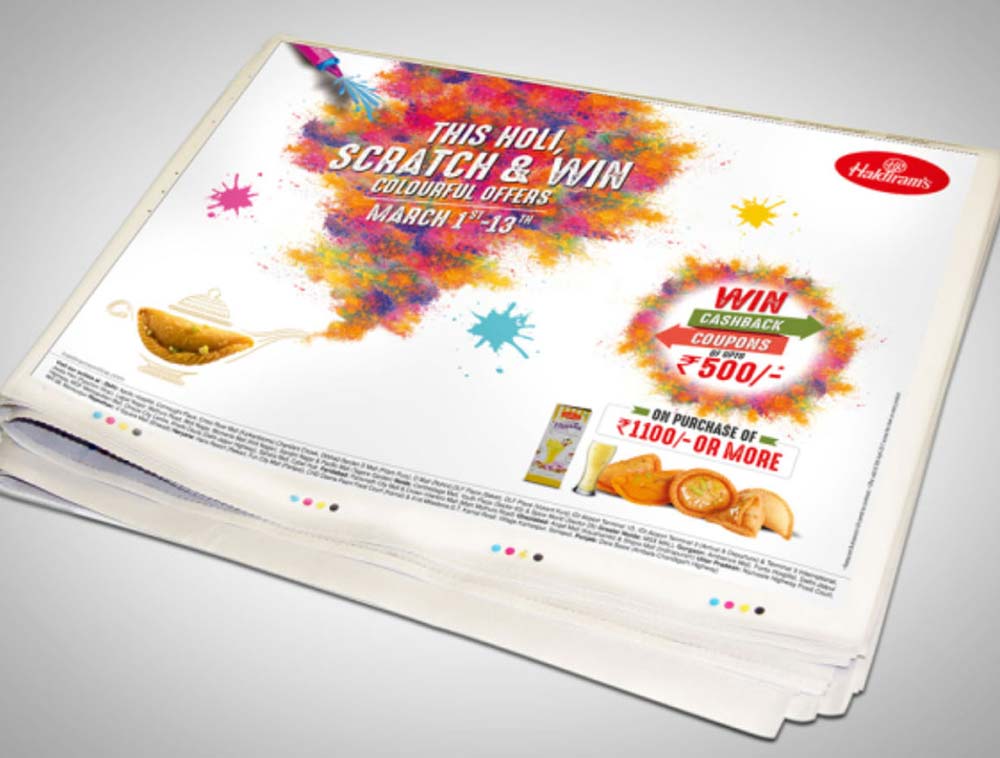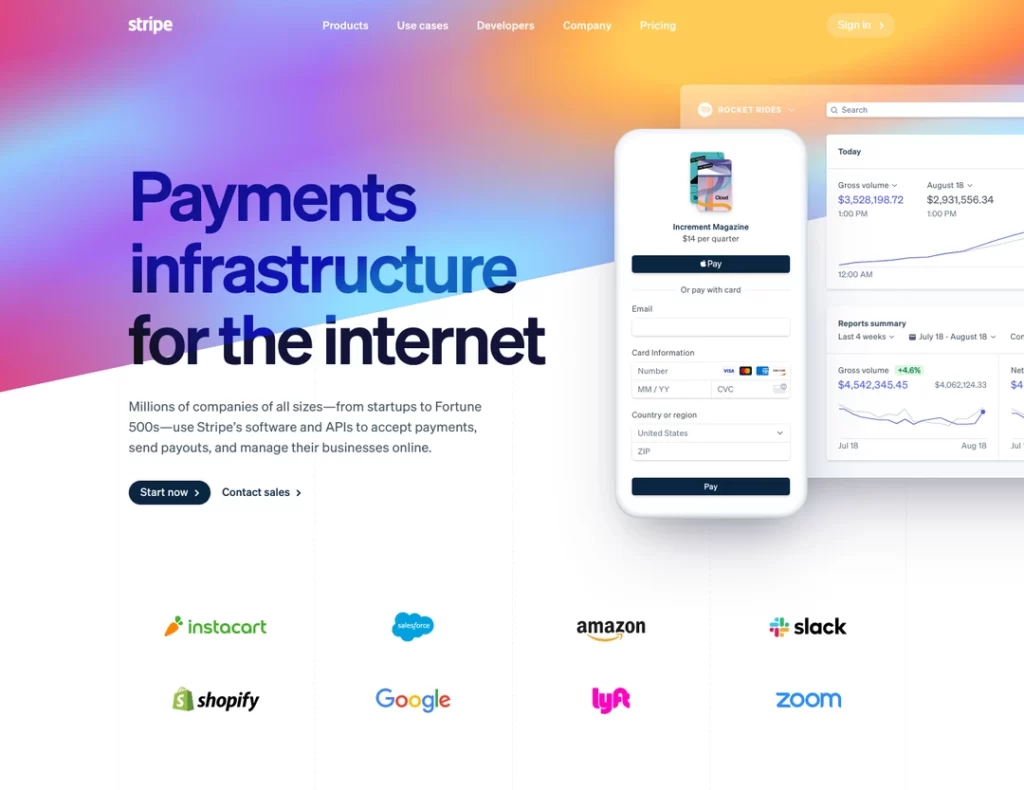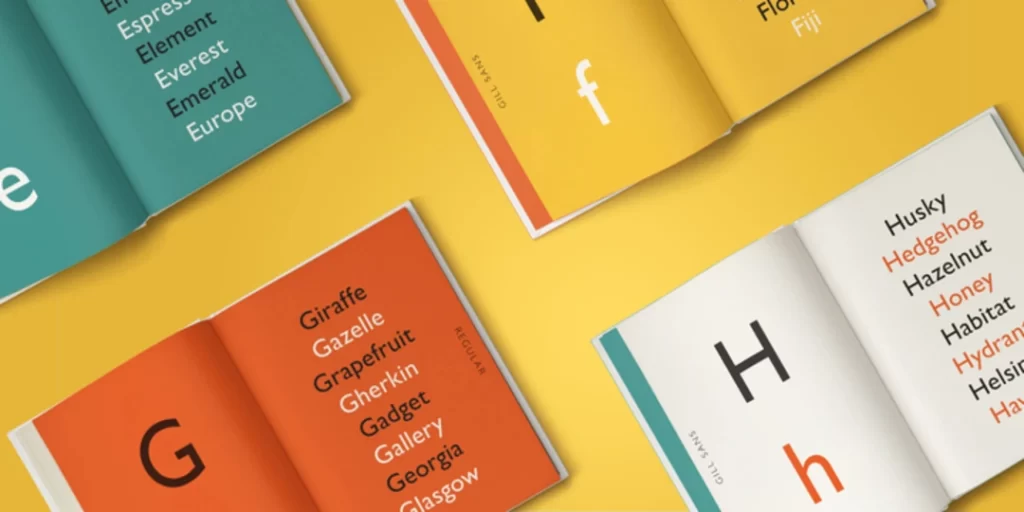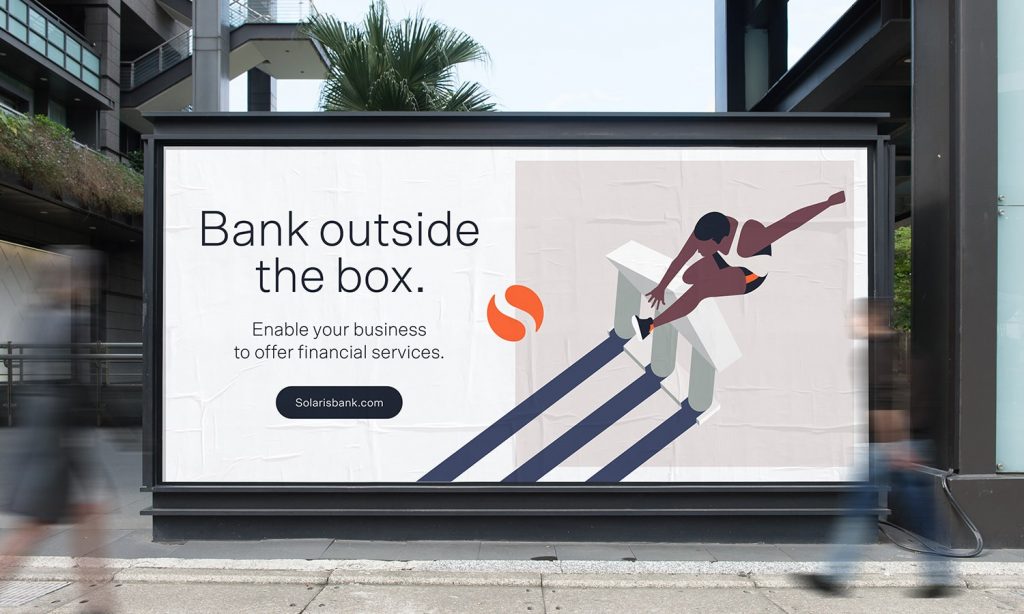Design for Print vs Web: Key Differences and Considerations
Since the advent of the internet, print and web design have often been seen as rivals. However, while there is some overlap, design for print and web requires different approaches, skills, and considerations. Understanding the key differences can help designers and businesses utilise the unique advantages of each medium.
Table of Contents
A Brief History
From Gutenberg to Zuckerberg: How We Arrived Here
Humans have been designing visually for centuries, but printed materials and web pages represent relatively recent innovations. The print design traces its origins to Johannes Gutenberg’s printing press in the 15th century, which allowed the mass production of books and pamphlets. This remained the dominant media format for centuries.
The invention of HTML and the web browser in the 1990s brought design into the digital world. As internet adoption boomed in the 2000s, more and more content shifted online. According to Statista, over 5.3 billion people now use the internet regularly. For designers, the rise of the web has opened up new possibilities even as it has disrupted print. Understanding the core differences between these mediums is crucial.
Overview of Print Design

Print design encompasses any design meant for physical print materials, such as books, magazines, brochures, posters, business cards, packaging, and more.
Characteristics of Print Design
Some key characteristics of print design include:
- Fixed layouts and formats: Print designs have set dimensions and layouts that don't change. This allows for precise alignment and spacing of design elements.
- Higher resolution: Print uses CMYK and Pantone colours at 300 dpi or higher resolutions, allowing for sharp image and text reproduction.
- Limitations on interactivity: Print designs don't allow for interactive elements beyond basic paper manipulations. The reader progresses sequentially through the material.
- Physically accessible and collectable: Printed materials can be held, shared, collected and accessed without electricity or internet. This gives them a unique, tangible appeal.
- Higher production costs: Printing physical materials incurs higher costs than web design, especially for small print runs or special finishes.
Print Design Process
The print design process typically involves the following:
- Defining objectives, target audience and budget constraints
- Developing initial concepts and layouts
- Refining the preferred design direction
- Finalising all copy, images, illustrations and other elements
- Preparing production-ready files and approving physical proofs
- Printing and binding the finished materials
Overview of Web Design

Web design involves creating visual layouts and interfaces for websites and web applications. This includes navigation menus, banners, sidebar content and main content areas.
Characteristics of Web Design
Critical qualities of effective web design include:
- Flexible, responsive layouts: Web content must adapt to many screen sizes, from small phones to large monitors. This requires fluid, flexible layouts.
- Lower resolution: Web images and elements use RGB colours at 72 or 96 dpi, requiring simplified visuals.
- High interactivity: The web reacts to user actions with features like dropdowns, hovers, clicks and scrolling. This interactivity is a fundamental appeal.
- Accessible across devices: Sites with an internet connection can be viewed on all web-enabled devices, vastly increasing potential reach.
- Lower production costs: Websites have relatively low launch costs compared to print materials. Costs focus more on continued development.
Web Design Process
A typical web design process may include:
- Documenting the project scope, goals and content requirements
- Mapping out site architecture and functionality needs
- Wireframing key pages and defining the visual style
- Developing page templates and fully designed comps for review
- Building out final, functional web pages and implementing backend code
- Testing for issues across browsers and devices
- Launching the live site and monitoring analytics
Critical Differences Between Print and Web Design

While print and web projects share some common design principles and processes, they have distinct characteristics that impact design decisions.
Layout Approaches
Print uses fixed, precise multi-column grid layouts with set sizes and placements. This gives designers total control of spacing and alignment. Web instead uses flexible, fluid layouts that adapt to various screen dimensions. Standard 12 or 16-column grids with percentages or em units allow elements to resize accordingly.
Colour Management
Print leverages the CMYK or Pantone colour gamuts, allowing deep, vibrant hues perfect for images and branding. Websites use the RGB gamut instead, displaying brighter colours with a more limited range. Ensuring logo colours and images translate between CMYK and RGB requires careful colour management.
Image Use
Print accommodates images at 300 dpi or higher for photographic sharpness and detail. Web images display at just 72 or 96 dpi, requiring more straightforward illustrations with fewer gradations, converged shapes and bold colours that read well at lower resolutions.
Typography
Print-type rendering allows for delicate serifs, curves and other ornate text details. Web type must use thicker stroke weights, larger sizes and ample line heights to ensure device clarity. Sans serif typefaces tend to perform better on screens.
Interactivity
Beyond flipping pages, the print design remains fixed and stationary. Web users can engage with sites by hovering, clicking, scrolling and entering data. This interactivity dynamically changes content, requiring thoughtful information architecture and seamless state transitions.
Production Timelines
Print projects require significant lead production times for colour proofing, printing, binding and delivery logistics. Websites can launch almost immediately after the completion of design and development. However, web projects also tend to evolve continuously over more extended periods.
Typography Appropriate for Print

Choosing and Formatting Type for Fixed Pages
Since printed pages offer finite space, typography choices carry more weight for print design. Key considerations include:
- Typefaces – Print allows more ornate decorative fonts as readers view them up close. Easy legibility remains vital, though.
- Hierarchy – Bold, size, colour and style adjustments establish hierarchy since pages lack scroll ability cues
- Alignment – Justified body copy helps define columns
- Leading – More line spacing improves readability
- Kerning & Tracking – Fine-tuning character spacing is essential
- Size – The type generally needs to be larger than online to accommodate closer viewing
For example, a book designer would carefully adjust leading, kerning, margins, indentations, etc., to improve engagement during long periods of focused reading.
Typography for Web Design

Crafting Flexible, Functional Type for Screens
Web typography centres around clarity, flexibility, and performance:
- Typefaces – Web fonts allow great variety, but load times are a factor. Simple, bold options improve readability.
- Hierarchy – Varying types, colours and sizes across levels create a visual hierarchy.
- Alignment – Flush left body copy aids quick online reading
- Leading – Extra line height prevents lines from colliding when resized
- Kerning & Tracking – Unnecessary at smaller screen sizes
- Size – Type sizes are more significant than needed to allow for scaling
Web copy also requires adaptation for disparate contexts—reading an entire article requires different typographic choices vs. an individual product description. Web designers must craft type guidelines flexible enough to handle long- and short-form use cases.
Image Use in Print Design
Photography, Illustrations and More
The print design allows for vibrant, high-resolution image integration, lending emotional power to pages:
| Print Image Attributes | Examples |
| High visual impact | An IMAX film poster |
| Intricate details | Zoomed-in photos in a nature book |
| Bleeds extend past page edges | Full-page magazine ads |
| Artistic illustrations | Medical textbook diagrams |
| Stunning photo spreads | Pages in a coffee table book |
However, print images must enhance content and guide the reader’s eye across the page through intentional placement.
Full-color images can get expensive with printing costs, so designers carefully balance aesthetics and budget.
Image Considerations for Web
JPEGs, GIFs, Vector Graphics and More
Web images provide less print-quality fidelity but offer unique digital advantages:
| Web Image Attributes | Examples |
| Compressed file formats (JPG, GIF, PNG, SVG) | Loading speed matters online |
| Adaptive, responsive sizes | Images flexibly resize on various devices |
| Hyperlinked images | Clicking images can lead to other pages |
| Animated GIFs | Simple repeating animations |
| Image carousels | Cycle users through images automatically |
However, web images also pose challenges like longer load times. Designers compress files aggressively and optimise images to focus on visual quality where it matters most.
Tools like image sprites allow better performance by combining icons into single files. Lazy loading delays non-essential images from loading until needed.
The Affordances of Print Marketing

Posters, Mailers, Billboards and More
From mailers slipping into customer mailboxes to massive billboards towering beside highways, print marketing leverages custom shapes, sizes and distribution methods.
- Dimensional Mailers – Die-cut mailers in custom shapes grab the recipient's attention.
- Outdoor Signage – Weatherproof posters and billboards engage mass audiences.
- Point of Purchase Displays – Retail POP displays speak to customers at the cash register
- Door Hangers – Hangers deliver flyers and coupons right to front doors
- Magazine Ads – Glossy multi-page ads in magazines lend prestige
The lack of sound, motion and interactivity in print marketing poses challenges. Designers distil critical information into arresting visuals and snappy copy that stops audiences in their tracks.
Unique Web Marketing Capabilities
Going Beyond Physical Limitations
Unbound from print restrictions, web marketing leverages interactive digital capabilities:
- Video Marketing – Compelling video content builds engagement
- Search Ads – PPC ads target prospects actively searching
- Social Media Marketing – Organic and paid social media reach vast audiences
- Smart App Advertising – In-app mobile ads put brands front-and-centre
- Real-Time Retargeting – Past site visitors see display ads across the web
However, the lack of physicality online poses its challenges. Designers must cut through the noise to connect meaningfully amid endless digital distractions.
Print Design Project Examples
Books, Catalogs, Brochures and More
Print projects leverage custom shapes, textures, layouts and distribution methods:
- Books – Chapters feature margins, grids, custom illustrations
- Newspapers – Intense hierarchies guide readers through dense content
- Catalogues – Product-focused layouts emphasise visuals and details
- Brochures – Folding panels reveal critical information sequentially
- Magazines – Feature layouts engage readers across multi-page spreads
- Packaging – 3D form factors reflect and reinforce brand identities
Print designers hand-craft layout details tailored to the reader's context. A textbook prioritises instructional clarity. A boutique card line might focus more on ornamental flourishes.
Web Design Project Staples
Home Pages, Landing Pages, Blogs and More
Typical web design projects have specialised goals and best practices:
- Home Pages – Large images, minimal copy, and clear navigation set site direction
- Landing Pages – Distilled value propositions convert visitors into leads
- Blogs – Scannable headline/image combinations allow quick previews
- Portfolios – Graphic-rich galleries showcase work samples
- Ecommerce – Shopping fits simple search flows from product to checkout
For each format, web conventions and best practices guide design choices. Standard templates focus attention on crucial conversion tasks rather than purely aesthetic considerations.
Print Designer Skill Sets
Hardware and Software Expertise
Print designers need hands-on expertise across various mediums and tools:
- Drawing/Sketching – Quick preliminary sketching clarifies layout ideas
- Colour Theory – Balancing and coordinating colours by hand
- Page Layout Software – InDesign or QuarkXPress mastery
- Image Editing Software – Photo manipulation via Photoshop
- Prepress – Preparing print-ready files for commercial printing
- Printing Process Familiarity – Practical printing methods knowledge
This well-rounded skillset combines equal parts software proficiency and real-world craft ability. For example, familiarity with production practicalities like bleed and crop mark requirements prevents novice mistakes.
Web Designer Must-Have Skills

HTML, CSS and Digital Expertise
Modern web designers wear many hats across design and development:
- Graphic Design – Applying visual branding through logos, fonts, color schemes
- UI/UX Design – Crafting intuitive, frictionless user interfaces and customer experiences
- HTML & CSS – Structuring and styling sites using web markup and styling languages
- JavaScript/Programming – Coding interactivity with JavaScript or frameworks like React
- SEO Strategies – Optimising sites for search engine discoverability
- Analytics – Measuring site performance via Google Analytics or similar
While early web design focused heavily on visual comps, coding expertise is increasingly mandatory. Understanding technical possibilities and constraints is crucial when crafting living responsive sites.
Design for Print and Web: Best Practices

Despite their differences, print and web projects share many fundamental design best practices that contribute to successful media outcomes.
Clearly Define Goals and Requirements
Always start projects by clarifying critical metrics for success along with target audience needs, technical specifications and other requirements essential to a practical design solution. These guideposts keep work aligned with business objectives.
Focus on User Experience
Keep the end-user experience at the core of all design decisions. Both print and web projects benefit tremendously by respecting reader/user needs for clear communication and seamless content consumption. User test print comps and fully functional web prototypes whenever possible.
Establish Brand Alignment
Create visual systems that flexibly maintain brand consistency across print and digital touchpoints. Shared colours, fonts, graphic motifs and messaging strategically reinforce branding at every opportunity while allowing layout variations.
Iterate and Refine Concepts
Be willing to explore multiple ideas through loose sketching without attachment to any one direction too early. Let robust design solutions emerge organically from rounds of iteration, collaboration and user feedback. Allow time for refinement.
Balance Aesthetics and Function
Beautiful visuals and copy should excel at user-centric communication vs. self-referential decoration. Maintain aesthetics aligned with brand identity but rooted in clarity and purpose. Eliminate anything superfluous that distracts from core messages and functionality.
Conclusion: Mastering Both Crafts
While they share creative DNA, print and web design diverge significantly regarding tactical execution. Print design means mastering fixed physical layouts and production techniques. Web design requires understanding flexible browsers and screens.
However, the most effective print and digital projects always respect core design principles like visual hierarchy, user psychology, and thoughtful communication strategies. Master designers build firm competency in their primary medium but stay curious about how the other half lives.
Let the medium follow the message rather than dictating it. Design for print and the web each unlock unique storytelling superpowers—understand the strengths of both, and you can conquer any design quest.
Frequently Asked Questions
What are the main differences between print and web design?
The core differences centre around print's fixed physical pages versus the web's flexible digitally rendered screens. Print allows superior image fidelity and tactile richness but faces challenges updating content. Web design lacks print quality but enables interactivity, personalisation and real-time updates.
Which pays better, print or web design?
Salaries can vary significantly based on role, experience, company and location. However, on average, web work tends to pay better, with Statista reporting that US web designers earned a median pay of $77,200 in 2021 vs $49,841 median income for print designers.
Which has better job security and outlook—print or web design?
Market demand and job growth favour web design. The US Bureau of Labor Statistics predicts strong 27% average job growth for web developers between 2020-2030 compared to just 2% average growth for traditional graphic design roles. The digital shift continues boosting online roles.
How should new designers choose between focusing on print or web work?
Ideally, build initial skills in both realms since principles like typography, colour, and layout translate across mediums. However, specialising early in either print production techniques or modern web coding fundamentals provides the fastest path to professional competency.
Is print design truly dying compared to booming digital work?
Meanwhile, print design lacks the breakneck growth of web work, books, marketing materials, product packaging, and more, which continue to drive print efforts. Well-crafted print collateral conveys stability and prestige, which online media sometimes struggle to match. Omnichannel customer experiences linking print to digital strategies represent the actual future.
